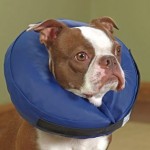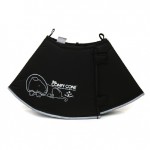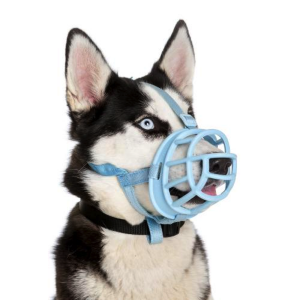[s2If current_user_cannot(access_s2member_ccap_course_003_ep)]
To view this lesson, please purchase the Empowered Puppy Raising course or log in if you have already purchased it.[/s2If]
[s2If current_user_can(access_s2member_ccap_course_003_ep)]
TRAINING
- Stay/Stop/Wait
- Targeting head into objects
Wait is a good behavior to have for safety. For example, it’s helpful to have your dog wait for you to make sure movement is safe before allowing it: before blind corners, at doorways, in the elevator, before eating, before getting out of the crate in the car or your home, and before being lifted out of the car (or jumping when they are older).
For puppies, I prefer Wait (don’t go forward, hang out here) to a full obedience-type Stay (stay in this exact position). Even for adult dogs, most dogs just need the ability to stop and not go forward past some imaginary line, rather than the obedience Stay. As my dog gets older, I’m so happy that I never made him sit at curbs. Peanut always was taught to do a wait, with him still standing. This is much easier on his old joints, so we have been able to be consistent throughout his life.
Stop and Wait:
- Walk along slowly with your puppy
- Say, “Wait”
- Stop your movement, which most puppies will copy
- Click when the dog stops
- Feed a treat or more than one
- Give your release cue, like Free — which says the puppy can move again
- Move away with the puppy
- Over time, you will click only if the puppy stops faster than average, getting a faster and faster stop
For activities that the puppy clearly wants to do:
- Say, “Wait”
- Prevent access to the activity – For example, keep the door shut, the food puzzle in your hand, the gate closed, your body in front of the elevator door (fade this), slow stop at the curb (and relax the leash)
- Puppy waits briefly
- Praise calmly and pause
- Treat is optional
- Give your release cue, like Free
- Release him to do the activity he was waiting for (getting his food puzzle, going around a corner, walking across the street
Gradually extend time between the Wait cue and the release cue, also add in motion, so that you can still move and your puppy will Wait.
Note: Stay and Wait are also covered in the Ahimsa Dog Training manual.
Head through!
Use the instructions from the last lesson for teaching your dog to put his head through a harness to teach the dog to put his nose or head into other objects, like a cup, a muzzle, and a post-surgery collar, like the standard cone or the newer soft cones or inflatable collars.


 Use a muzzle that he can easily eat treats through, pant, and lick through, like the Baskerville Ultra, which is pictured here. Never ever leave a muzzle on an unattended dog.
Use a muzzle that he can easily eat treats through, pant, and lick through, like the Baskerville Ultra, which is pictured here. Never ever leave a muzzle on an unattended dog.
When you train these behaviors, rather than being super excited and upbeat, stay calm and relaxed. Feed treats calmly and praise in a soothing voice. If your puppy calms with massage, use that as part of the reinforcement. Practice at a time when your puppy is mellow. If you can, turn the surgery collar and/or muzzle into snuggle equipment – when they are on, your dog knows he will get a relaxing massage from you. During training, the targeting is the More Please Signal. That is, keeping his nose at the end of the muzzle or his neck through the cone is the More Please Signal for treats and petting. Gradually mess with the straps so that’s just part of the game.
When get to the stage of clipping it on, have him find treats or give him a food puzzle to work on. Be sure he can actually lick the food out while wearing the muzzle or cone. Take it off before he is stressed. At this point, our puppy can’t just stop doing the More Please Signal, so watch for signs that he’s done (backing away, tongue flick, pawing at the muzzle, etc.). Try to take it off BEFORE he gives one of those signs, but if he does do that, just get his attention and then take off the muzzle, collar, etc. Slowly work back up to clipping it on.
[vc_video link=”https://vimeo.com/135899304″]
Tip: you can turn the muzzle into a muzzle-cicle. Wrap it the muzzle part in plastic wrap so that it is sort of a waterproof bowl. Put wet dog food inside along the walls of the muzzle. Freeze. Hold the muzzle so that your dog can put his nose in and eat. If your dog is at the stage where you can attach the muzzle as a collar as well, you can do that, just make sure the frozen part doesn’t touch his nose. We want to make sure he can breathe and he doesn’t get frostbite!
[/s2If]